
Saint Boniface, born Winfrid in the Devon town of Crediton in Anglo-Saxon England, was a leading figure in the Anglo-Saxon mission to the Germanic parts of the Frankish Empire during the 8th century. He organised significant foundations of the church in Germany and was made archbishop of Mainz by Pope Gregory III. He was martyred in Frisia in 754, along with 52 others, and his remains were returned to Fulda, where they rest in a sarcophagus which became a site of pilgrimage. Boniface's life and death as well as his work became widely known, there being a wealth of material available—a number of vitae, especially the near-contemporary Vita Bonifatii auctore Willibaldi, legal documents, possibly some sermons, and above all his correspondence. He became the patron saint of Germania, known as the "Apostle of the Germans".
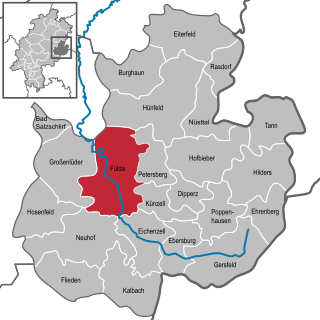
Fulda is a city in Hesse, Germany; it is located on the river Fulda and is the administrative seat of the Fulda district (Kreis). In 1990, the town hosted the 30th Hessentag state festival.

The Weser is a river in Northwestern Germany. Formed at Hannoversch Münden by the confluence of the rivers Fulda and Werra, it flows through Lower Saxony, then reaching the Hanseatic city of Bremen, before emptying 50 km (31 mi) further north at Bremerhaven into the North Sea. On the opposite (west) bank is the town of Nordenham at the foot of the Butjadingen Peninsula; thus, the mouth of the river is in Lower Saxony. The Weser has an overall length of 452 km (281 mi). Together with its Werra tributary, which originates in Thuringia, its length is 744 km (462 mi).

The Fulda is a river of Hesse and Lower Saxony, Germany. It is one of two headstreams of the Weser. The Fulda is 220.4 kilometres (137.0 mi) long.
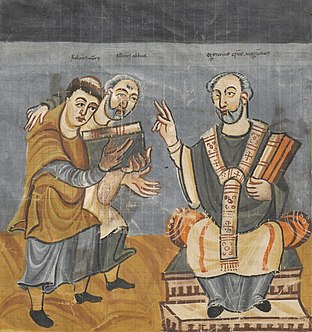
Rabanus Maurus Magnentius , also known as Hrabanus or Rhabanus, was a Frankish Benedictine monk, theologian, poet, encyclopedist and military writer who became archbishop of Mainz in East Francia. He was the author of the encyclopaedia De rerum naturis. He also wrote treatises on education and grammar and commentaries on the Bible. He was one of the most prominent teachers and writers of the Carolingian age, and was called "Praeceptor Germaniae," or "the teacher of Germany." In the most recent edition of the Roman Martyrology, his feast is given as 4 February and he is qualified as a Saint ('sanctus').

Feke is a small city and a district in Adana Province of Turkey, 122 km from the city of Adana, 620m above sea-level, a small town on attractive forested mountainside. The current mayor is Ahmet Sel (MHP).

Bundesautobahn 66 is an autobahn in southwestern Germany. It connects the Taunus to Fulda, passing close to Frankfurt am Main. The first part of the autobahn between Wiesbaden and the Nordwestkreuz Frankfurt, was opened as early as 1934, then called the Rhein-Main-Schnellweg. It became an autobahn in 1965.

Heinrich von Bibra, Prince-Bishop, Prince-Abbot of Fulda (1711–1788) was Prince-Bishop from 1759 to 1788.
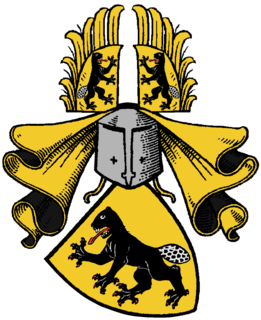
The Bibra family was one of the leading Uradel families in Franconia and present day Thuringia from the mid-15th century to about 1600. Later on the family rose from Reichsritter to Reichsfreiherr. After the Holy Roman Empire dissolved, they were made ‘’Freiherr’‘ (Barons) of Bavaria and Bohemia.
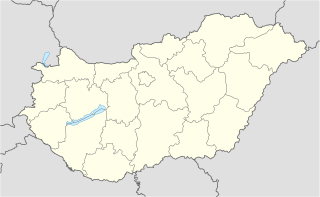
Mucsi is a village in Tolna County, Hungary. The former German name was Mutsching.

The Witch trials of Fulda in Germany in the years from 1603 to 1606 resulted in the death of about 250 people. It belonged to the four largest witch trials in Germany alongside the Trier witch trials, the Würzburg witch trial, and the Bamberg witch trials.
Paul Deichmann was a German general during World War II. He was a recipient of the Knight's Cross of the Iron Cross of Nazi Germany.
Eoban was a companion of St. Boniface, and was martyred with him on his final mission. In Germany, he is revered as a bishop and martyr.
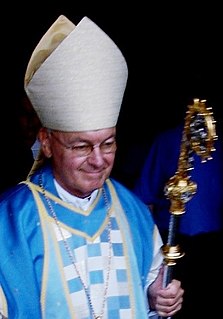
Heinz Josef Algermissen was bishop of the Roman Catholic Diocese of Fulda from 2001 until 2018.
Himesháza is a village in Baranya county, Hungary.

The Rubik R-03 Szittya I was a Hungarian single-seat sailplane flown in the late 1930s. The design was developed through three improving variants. though only one of each was built.
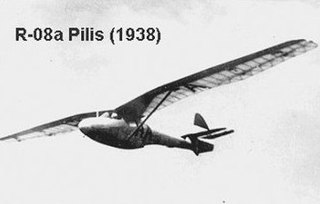
The Rubik R-08 Pilis was a Hungarian single-seat, advanced training glider first flown in 1939. It was very successful; 269 were built in batches, the first starting in 1939 and the last in 1956.

The 1943 Hungarian Rubik R-22 Futár (Courier) family of single seat, high performance sailplanes was developed between 1943 and 1958, though production did not begin until 1948. Four variants were serially produced, with the R-22S Június 18 the most numerous. There were several improvements within the types and there were three one-offs. Overall, 104 were built. They set numerous national records and one finished runner-up for distance at the 1958 VIIth World Gliding Championships, coming 11th overall.

The MSrE M-30 Fergeteg (Storm) was a Hungarian two seat advanced training glider. Originally designed in the early 1940s, its first flight was not made until 1950. Though five variants were developed, only six M-30s were built.

















